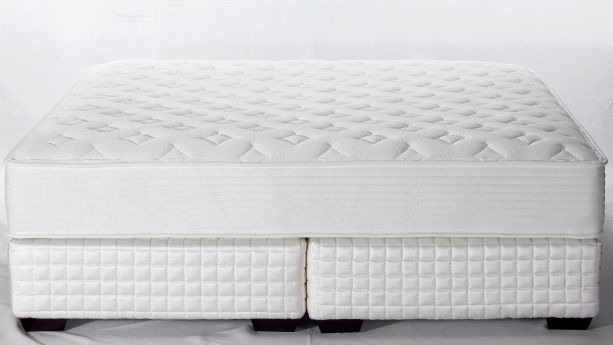
Mattresses sold in the United States are subject to various regulations and standards concerning flammability and chemicals. These also set requirements concerning documentation, labelling, and safety testing.
This guide covers various compliance requirements related to mattresses, including the Flammable Fabrics Act (FFA), Law Labels, and ASTM F1566.
Content Overview

FREE CONSULTATION CALL (US, EU & UK)
- Request a free 30-minute call with Ivan Malloci to learn how we can help you with:
- Find product requirements
- Certification and labeling
- Lab testing
Flammable Fabrics Act
The Flammable Fabrics Act (FFA) sets requirements for the flammability of mattresses and mattress pads, among other products. In general, for the sake of consumer safety, the harder it is for a mattress to catch fire, the better.
16 CFR Part 1632 – Standard for the Flammability of Mattresses and Mattress Pads
16 CFR Part 1632 sets requirements regarding:
- The materials used in testing the product’s flammability
- The methods and equipment used
- Performance
Flammability
This standard requires mattresses and mattress pads to undergo the test method established in 16 CFR Part 1632.4.
The product passes the test if the char length of individual cigarette test spots does not exceed 2 inches (5.1 cm) from the cigarette.
Labeling
Mattresses containing a chemical fire retardant must be labeled with:
- The letter “T”, per the CPSC’s requirements
- Permanent precautionary instructions
Note that if the mattress or mattress pad is a one-time-use product, it is exempt from the labeling requirement.
16 CFR Part 1633 – Standard for the Flammability (Open Flame) of Mattress Sets
16 CFR Part 1633 sets requirements concerning flammability and testing procedures for mattress sets, and aims to mitigate mattress fire incidents.
Flammability
The mattress set must undergo the 30-minute test method specified in 16 CFR Part 1633.7, and comply with both the following two criteria:
a. The highest rate of heat release must not be more than 200 kW during the testing duration.
b. The total heat release must not surpass 15 megajoules (MJ) during the first 10 minutes of the test.
Labeling
Mattress sets must bear a readable label that contains:
- Importer and manufacturer names and addresses
- Month and year of manufacture
- Model identification number
- The mattress set’s prototype identification number
- A certification of product compliance
Certification statement
Here is an example of certification statement (for mattresses that are sold without a foundation):
“This mattress meets the requirements of 16 CFR part 1633 (federal flammability (open flame) standard for mattresses) when used without a foundation”
Statement
The manufacturer must also indicate, with one of the following statements, whether the mattress is to be sold by itself or with a foundation:
a. “THIS MATTRESS IS INTENDED TO BE USED WITHOUT A FOUNDATION”
b. “THIS MATTRESS IS INTENDED TO BE USED WITH FOUNDATION(S): <Foundation ID>”
c. “THIS MATTRESS IS INTENDED TO BE USED WITHOUT A FOUNDATION OR WITH FOUNDATION(S): <Foundation ID>”
General Certificate of Conformity (GCC)
The General Certificate of Conformity (GCC) is a document that the importer or manufacturer must issue for certain non-children’s products, such as mattresses.
It is a document stating that the product in question complies with applicable safety standards. It also includes information about the time and place the product was manufactured.
The Consumer Product Safety Commission (CPSC) provides an illustrative example of a general certificate of conformity for a mattress. It contains, as required, the following:
- The product name and description
- A list of relevant CPSC product safety rules
- Domestic importer or manufacturer name
- Contact information (name, phone number, email, and physical address)
- Month and year, and city and country, of manufacture
- Month and year, and city and country, of testing
- Name, address, and phone number of the laboratory that performed the test
ASTM Standards
You can use ASTM standards to ensure that your mattress is safe for consumers, even when those standards are not incorporated by reference into federal regulations, and thus are not mandatory per se. Here we list some examples of ASTM standards that are relevant to mattresses.
ASTM E1590 – Standard Test Method for Fire Testing of Mattresses
ASTM E1590 is a fire-test-response standard that covers mattresses and mattresses with foundations. Specifically, it is a test method that mainly uses a flaming source ignition method for testing. It also lists three testing configurations:
1. Test room, dimensions 12 ft by 8 ft by 8 ft (3.66 m by 2.44 m by 2.44 m) high
2. Test room, dimensions 12 ft by 10 ft by 8 ft (3.66 m by 3.05 m by 2.44 m) high
3. Open calorimeter (or furniture calorimeter)
ASTM F1566 – Standard Test Methods for Evaluation of Innersprings, Boxsprings, Mattresses, or Mattress Sets
ASTM F1566 contains test methods for evaluating innersprings, boxsprings, mattresses, or mattress sets. It covers:
- Un-upholstered mattress core units
- Un-upholstered foundations
- Finished foundations
- Mattress constructions
The standard has two test methods, one of which is a method for testing mattresses and mattress sets. This method includes measurements for:
- Firmness
- Firmness retention
- Durability
- Effect of impact
ASTM F3340 – Standard Test Method for Thermal Resistance of Camping Mattresses Using a Guarded Hot Plate Apparatus
ASTM F3340 is a method of testing the thermal resistance of camping mattresses, such as the following types:
- Inflatable air mattresses that contain reflective materials
- Self-inflating open-cell foam mattress
- Closed-cell foam mats that are non-inflatable
The standard uses a two-plate apparatus to measure the thermal resistance of camping mattresses. It also sets criteria for consistently measuring the specimens in conditions that are relevant to their application.
Consumer Product Safety Improvement Act (CPSIA)
The Consumer Product Safety Improvement Act (CPSIA) regulates products for children aged 12 and below, which includes children’s mattresses.
Importers and manufacturers must:
- Comply with the relevant children’s product rules
- Have their product tested by a third-party CPSC-accepted lab
- Issue a Children’s Product Certificate
- Affix a tracking label
CPSC Standards
We found several standards that cover children’s mattresses, and we listed them in the table below.
| CPSC standard | Description |
| 16 CFR Part 1241 | This standard requires crib mattresses to comply with the provisions of ASTM F2933 – Standard Consumer Safety Specification for Crib Mattresses. It covers children’s mattresses, such as:
It also notes that if you test a full-size mattress, you should use an ASTM F1169-19-compliant full-size crib. |
| 16 CFR Part 1632 | This standard covers the flammability of mattresses and mattress pads in sizes FF 4-72 and applies to children’s products such as:
|
| 16 CFR Part 1633 | This standard covers the flammability (open flame) of mattress sets, which include children’s products, such as:
|
Children’s Product Certificate (CPC)
Importers and manufacturers of children’s products, which include mattresses intended for children, must issue a Children’s Product Certificate that is based on the results of product testing by a CPSC-accepted test lab.
CPSIA Tracking Label
You must affix a CPSIA tracking label to both the product and the packaging if your product is meant for use by children aged 12 and younger, such as children’s mattresses. The tracking label must generally contain:
- Name of manufacturer or private labeler
- Product’s date and location of manufacture
- The manufacturing process information (e.g. batch number)
- Contact details of the manufacturer (e.g. address, phone number)
- Model name and number
Requirements for Durable Products
The CPSC classifies crib mattresses as durable infant products.
According to 16 CFR Part 1130, you must provide with your durable product a product registration form containing:
- The importer or domestic manufacturer’s name
- Contact information (address and phone number)
- Model name and number or PIN
- Date of manufacture (month and year)
The product registration form enables the manufacturer or the seller to contact consumers regarding product recalls and safety-related information.
US Law Label
Many US states require a law label for stuffed products, such as mattresses. In this guide, we list California’s law label requirements as an example, as provided in the Home Furnishings and Thermal Insulation Act Rules and Regulations.
Mattresses require a Type No. 7 law label, which should contain the following information:
a. A space for stitching the label to the product
b. The statement “UNDER PENALTY OF LAW THIS TAG NOT TO BE REMOVED EXCEPT BY THE CONSUMER”
c. The phrase “ALL NEW MATERIAL consisting of”, followed by a description of the filling material
d. The finished size, and the net weight of the filling material
e. The Registry number
f. The statement “Certification is made by the manufacturer that the materials in this article are described in accordance with law”
g. The manufacturer’s or vendor’s name and address.
US state regulations for mattresses
In this section, we briefly explain a few examples of state fire safety regulations and how they apply to mattresses.
California TB 129 – Flammability Test Procedure for Mattresses for Use in Public Buildings
California TB 129 is a set of testing methods and standards used to determine the burning behavior of mattresses used in public occupancies, such as:
- Health care facilities
- Old age convalescent and board and care homes
- College dormitories, and
- Residence halls
California TB 129 applies to finished mattresses and other complete bedding systems. This standard is not intended to test the individual component materials used in the mattress, such as:
- Ticking materials
- Foams, and
- Cotton battings
BFD IX-11, Boston Fire Department Mattress Fire Test
The Boston Fire Department developed the BFD IX-11 Mattress Fire Test as a method to determine the flammability of upholstered products such as mattresses and beddings containing box springs used in:
- Health care facilities
- Hotels, and
- Dormitories
Lab Testing
You should have your products tested to prove compliance with the requirements of regulations such as the Flammable Fabrics Act and the CPSIA. If your product passes testing, you receive a test report indicating product compliance with the requirements.
| Standard | Lab testing |
| 16 CFR Part 1632 | This standard sets a cigarette ignition test. In practice, the mattress passes the test if the cigarette, once switched on, only burns a small portion of the product (that is the char length is not more than 2 inches). |
| 16 CFR Part 1633 | This standard sets flammability test procedure, where you expose the mattress to a pair of ignited propane burners, and ensure that:
|
| 16 CFR Part 1241 | This standard requires you to ensure your crib mattresses comply with the requirements of ASTM F2933, and sets two test methods:
|
Mattress testing companies
Here are a few companies that offer to test mattresses against the regulations, standards, or requirements mentioned earlier:
- Intertek
- UL Solutions
- Eurofins
- SGS
Additional Requirements
Here we list some additional regulations that are relevant to mattresses.
| Regulation | Description |
| California Proposition 65 | California Proposition 65 restricts flame retardants and other substances that can be found in mattresses.
Examples of flame retardants included in the California Proposition 65 List include:
Mattresses may also contain PFOA and PFOS, both of which are also included on the California Proposition 65 List as cancer-causing and reprotoxic substances. |
| 19 CFR Part 134 – Country of Origin Marking | Consumer products, such as mattresses, must carry a country of origin marking (e.g. “Made in China”) on the product and packaging. |
| Toxic Substances Control Act | The Toxic Substances Control Act sets substance restricitons, record-keeping, and reporting requirements.
For example, it covers chemical substances (e.g. DecaBDE) that are used to furnish, clean, treat, or care for foam bedding products such as mattresses. |
Recommended articles





















How to get the Prototype ID?
Hi Nicole,
I don’t think there is a specific format but you can see the details in 16 CFR Part 1633
Thank you for the valuable information, the article was very useful.